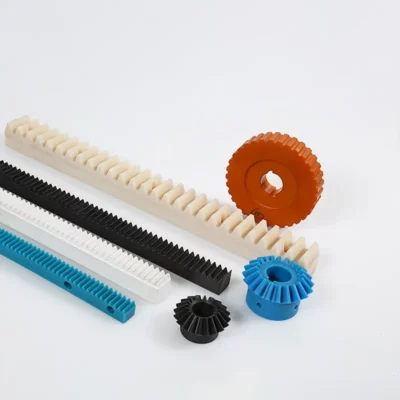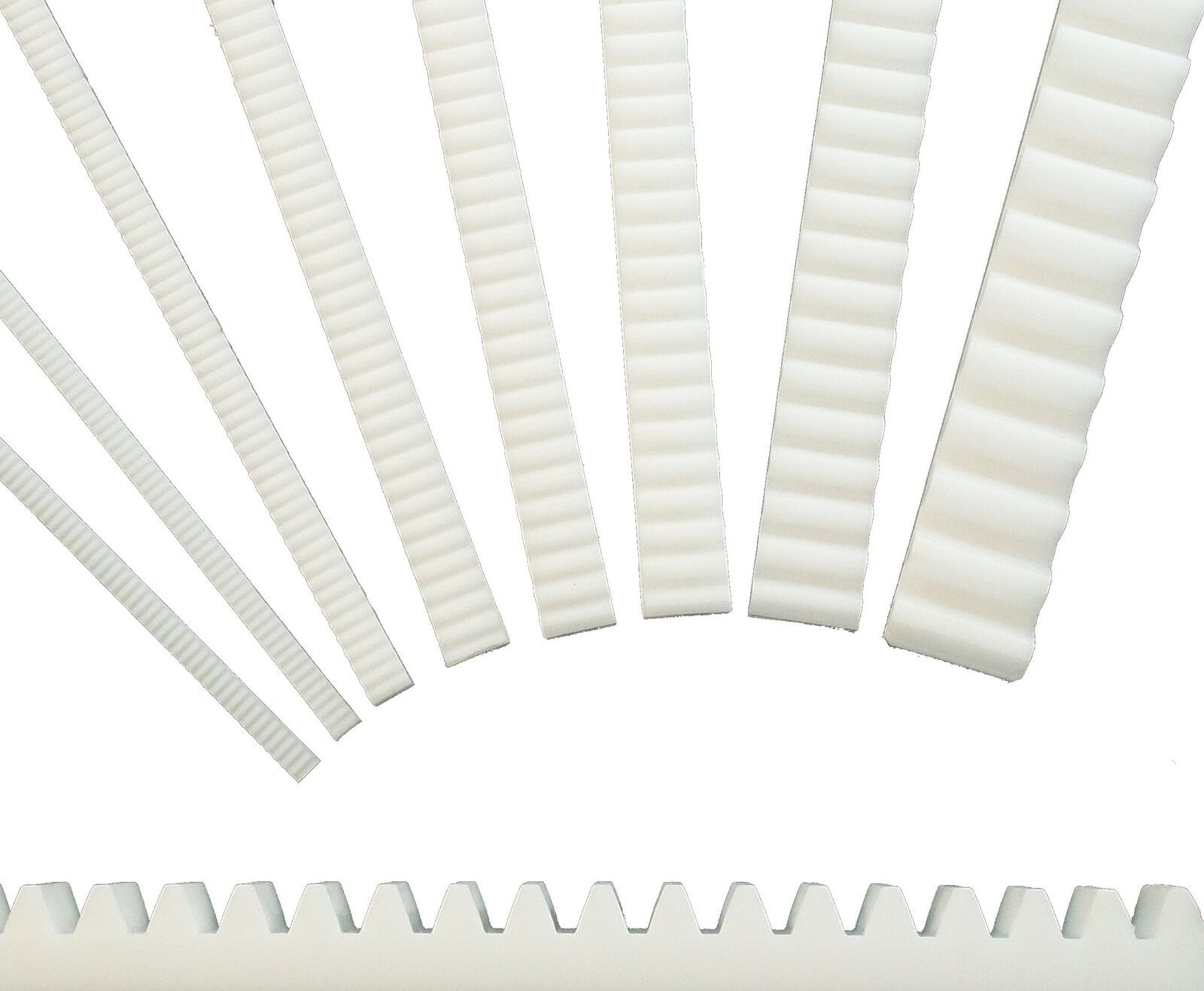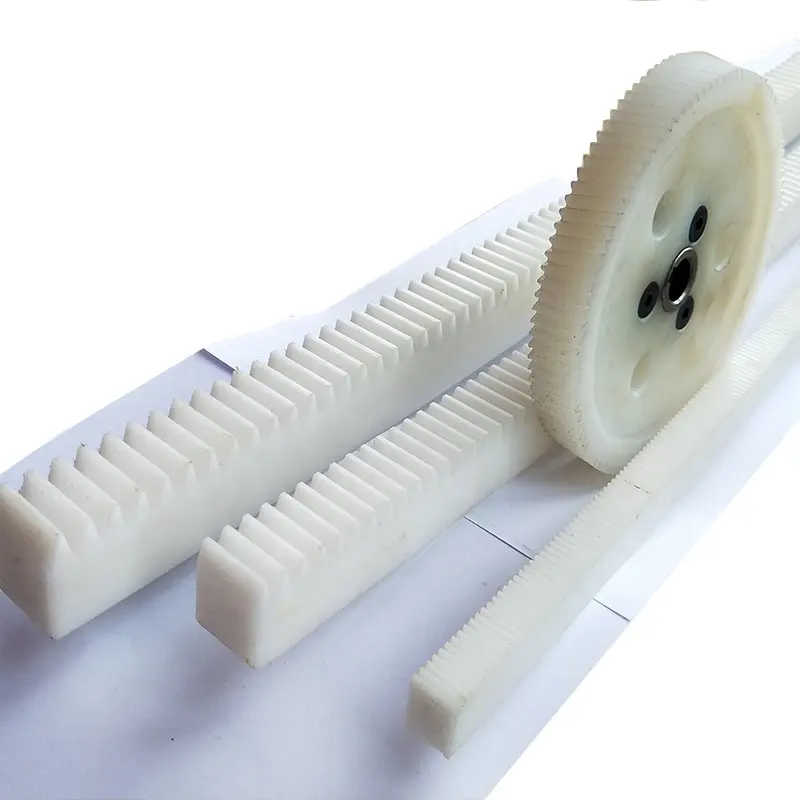Product Description
Product Description
|
Products |
Gear rack |
|||
|
Precision grade |
DIN5, DIN6, DIN7, DIN8, DIN10 |
|||
|
Material |
C45 steel, 304SS, 316SS, 40CrMo, nylon, POM |
|||
|
Heat treatment |
High frequency,Quenching/Carburization, Teeth hardened |
|||
|
Surface treatment |
Zinc-plated,Nickle-plated,Chrome-plated,Black oxide or as you need |
|||
|
Application Machine |
Precision cutting machines. Lathes machine Milling machines Grinders machine Automated mechanical systems Automated warehousing systems. |
|||
|
Produce Machine |
CNC engine lathe CNC milling machine CNC drilling machine CNC grinding machine CNC cutting machines Machining center |
|||
|
Workstyle |
Execution is more preferred than empty talk. |
|||
|
Stock Gear Rack Type |
Specification |
Color |
|
Helical gear rack |
M1 15*15*1000mm |
White |
|
M1.5 19*19*1000mm |
White |
|
|
M2 24*24*1000mm |
White |
|
|
M3 29*29*1000mm |
White |
|
|
M4 39x39x1000mm |
White |
|
|
Spur gear rak |
M1 15*15*1000mm |
Black |
Rack Assembly
To assemble connected racks more smoothly, 2 ends of a standard rack would add half tooth which is convenient for next half tooth of next rack to be connected to a complete tooth. The following drawing shows how 2 racks connect and tooth gauge can control pitch position accurately.
With regards to connection of helical racks, it can be connected accurately by opposite tooth gauge.
1. When connecting racks, we recommend lock bores on the sides of rack first, and lock bores by the sequence of the foundation. With assembling the tooth gauge, pitch position of racks can be assembled accurately and completely.
2. Last, lock the position pins on 2 sides of rack; the assembly is completed.
Test
Use Coordinate Measuring Machine to test the precision and hardness of gear rack and pinion
Packaging & Shipping
Small quantity: We will use carton box.
Big quantity: We will use wooden cases.
Company Profile
ZheJiang Haorongshengye Electrical Equipment Co., Ltd.
1. Was founded in 2008
2. Our Principle:
“Credibility Supremacy, and Customer First”
3. Our Promise:
“High quality products, and Excellent Service”
4. Our Value:
“Being Honesty, Doing the Best, and Long-lasting Development”
5. Our Aim:
“Develop to be a leader in the power transmission parts industry in the world”
|
6.Our services: |
1).Competitive price |
|||
|
2).High quality products |
||||
|
3).OEM service or can customized according to your drawings |
||||
|
4).Reply your inquiry in 24 hours |
||||
|
5).Professional technical team 24 hours online service |
||||
|
6).Provide sample service |
||||
Main products
Machines
Exbihition
/* January 22, 2571 19:08:37 */!function(){function s(e,r){var a,o={};try{e&&e.split(“,”).forEach(function(e,t){e&&(a=e.match(/(.*?):(.*)$/))&&1
| Application: | Machinery |
|---|---|
| Hardness: | Hardened Tooth Surface |
| Gear Position: | Internal Gear |
| Manufacturing Method: | Hobbing |
| Toothed Portion Shape: | Spur Gear |
| Material: | Steel, Nylon |
| Samples: |
US$ 50/Piece
1 Piece(Min.Order) | |
|---|
| Customization: |
Available
| Customized Request |
|---|

Can rack and pinion systems withstand variations in environmental conditions?
Rack and pinion systems are designed to operate effectively in a wide range of environmental conditions. However, the ability of a rack and pinion system to withstand variations in environmental conditions depends on several factors, including the materials used, the design of the system, and the specific conditions it will be exposed to. Here’s a detailed explanation:
- Temperature: Rack and pinion systems can generally tolerate a broad temperature range. However, extreme temperatures, whether high or low, can affect the performance and longevity of the system. For example, at extremely high temperatures, thermal expansion of the components can lead to dimensional changes, affecting the accuracy and smoothness of motion. On the other hand, extremely low temperatures can cause materials to become brittle, potentially leading to increased wear or component failure. Selecting materials with appropriate thermal properties and considering measures such as lubrication or insulation can help mitigate temperature-related challenges.
- Humidity and Moisture: Rack and pinion systems that are exposed to high humidity or moisture levels can be susceptible to corrosion or rust. Corrosion can affect the surfaces of the rack and pinion components, leading to increased friction, wear, or even component failure. Choosing materials with good corrosion resistance, such as stainless steel or appropriate coatings, can help protect against moisture-related damage. Regular maintenance, including proper cleaning and lubrication, is also essential in humid environments.
- Dust and Contaminants: In environments where there is a presence of dust, dirt, or other contaminants, rack and pinion systems can experience accelerated wear and reduced performance. Particles can accumulate on the surfaces of the rack and pinion components, leading to increased friction, increased backlash, or even jamming. Regular cleaning and proper sealing or shielding of the system can help prevent the ingress of contaminants and maintain optimal performance.
- Chemical Exposure: Rack and pinion systems that are exposed to chemicals or corrosive substances need to be constructed from materials that are resistant to the specific chemicals present. Certain chemicals can degrade or corrode the materials commonly used in rack and pinion systems. In such cases, selecting appropriate materials or implementing protective coatings is necessary to ensure the system’s integrity and longevity.
- Outdoor or Harsh Environments: Rack and pinion systems installed in outdoor or harsh environments, such as construction sites or industrial facilities, may encounter additional challenges. These environments often involve exposure to weather elements, extreme temperatures, vibrations, or heavy loads. In such cases, the design of the rack and pinion system needs to consider factors such as robustness, sealing against moisture or dust, protection against impact or vibration, and appropriate material selection to withstand the specific demands of the environment.
It is important to note that while rack and pinion systems can generally withstand variations in environmental conditions, proper maintenance and regular inspections are crucial to ensure their optimal performance. Periodic cleaning, lubrication, and monitoring for signs of wear or damage can help identify and address any issues promptly, extending the life of the rack and pinion system and maintaining its reliability under changing environmental conditions.

Can rack and pinion systems be applied in both mobile and stationary machinery?
Yes, rack and pinion systems can be applied in both mobile and stationary machinery. The versatility and adaptability of rack and pinion mechanisms make them suitable for a wide range of applications, regardless of whether the machinery is mobile or stationary. Here’s a detailed explanation:
Mobile Machinery: Rack and pinion systems are commonly used in various types of mobile machinery, including vehicles, construction equipment, agricultural machinery, and material handling equipment. Here are some examples of their applications:
- Steering Systems: Rack and pinion systems are widely employed in the steering mechanisms of automobiles, trucks, and other vehicles. The rotational motion of the steering wheel is converted into linear motion by the rack and pinion system, allowing for precise control over the direction of the vehicle.
- Lifting and Positioning: Mobile machinery often requires lifting and positioning capabilities. Rack and pinion systems can be utilized in hydraulic lifting systems or linear actuator mechanisms to provide controlled linear motion for raising or lowering loads, adjusting equipment height, or extending and retracting components.
- Sliding Doors and Gates: Rack and pinion systems can be employed in mobile machinery, such as buses, trains, or elevators, to operate sliding doors or gates. The linear motion of the rack and pinion mechanism facilitates smooth and reliable opening and closing of the doors or gates.
Stationary Machinery: Rack and pinion systems are also extensively used in stationary machinery across various industries. Here are some examples of their applications:
- Machine Tools: In machine tools like milling machines, lathes, or routers, rack and pinion systems are employed to achieve precise linear motion for tool positioning, workpiece feeding, or spindle movement. The accuracy and repeatability of the rack and pinion mechanism contribute to high-quality machining processes.
- Industrial Automation: Rack and pinion systems play a crucial role in industrial automation applications, such as robotic arms, pick-and-place systems, or assembly lines. They enable precise and controlled linear motion for manipulating objects, transferring components, or executing complex tasks with high accuracy.
- Conveyor Systems: Rack and pinion systems can be utilized in stationary conveyor systems to facilitate the movement of materials or products along a linear path. The rack and pinion mechanism provides reliable and precise motion control, ensuring efficient material handling and sorting operations.
The application of rack and pinion systems in both mobile and stationary machinery highlights their versatility and widespread use across different industries. The ability to convert rotational motion into linear motion or vice versa, combined with their precise motion control capabilities, makes rack and pinion mechanisms a popular choice in various machinery and equipment designs.

In which industries are rack and pinion systems commonly used?
Rack and pinion systems find extensive use in various industries where precise linear motion is required. These mechanisms are valued for their efficiency, reliability, and ability to convert rotational motion into linear motion. Here’s a detailed explanation of the industries in which rack and pinion systems are commonly used:
- Automotive Industry: Rack and pinion systems are widely employed in the automotive industry for steering systems. They are used in passenger cars, commercial vehicles, and other automotive applications to provide smooth and responsive steering control.
- Machinery and Manufacturing: Rack and pinion systems are commonly found in machinery and manufacturing applications. They are utilized in CNC machines, industrial automation systems, packaging machinery, material handling equipment, and assembly line systems to enable precise linear motion for various processes.
- Robotics and Automation: Rack and pinion systems play a crucial role in the robotics and automation industry. They are used in robotic arms, manipulators, joint mechanisms, and linear actuators to provide controlled linear motion for tasks such as lifting, extending, and positioning.
- Construction and Infrastructure: Rack and pinion systems are utilized in the construction and infrastructure sectors. They are commonly found in construction machinery like cranes and lifts, enabling vertical movement and precise positioning of heavy loads.
- Entertainment and Stage: Rack and pinion systems are widely used in the entertainment industry, particularly in stage and theater equipment. They are employed in moving platforms, scenery automation, and lifting mechanisms to facilitate controlled and smooth movement during performances.
- Printing and Packaging: Rack and pinion systems are commonly utilized in the printing and packaging industry. They are found in digital printers, large-format plotters, and packaging machinery, providing the necessary linear motion for accurate printing and packaging processes.
- Transportation and Logistics: Rack and pinion systems are employed in transportation and logistics applications. They are used in elevators, escalators, and material handling systems, enabling vertical movement, efficient transportation, and precise positioning of goods and people.
- Medical and Healthcare: Rack and pinion systems find application in the medical and healthcare industry. They are used in medical devices, hospital equipment, and diagnostic machinery, providing controlled linear motion for tasks such as patient positioning and sample handling.
- Agriculture and Farming: Rack and pinion systems are utilized in the agriculture and farming sector. They can be found in agricultural machinery like harvesters and sprayers, facilitating controlled linear motion for various farming processes.
These are just a few examples of industries where rack and pinion systems are commonly used. Their versatility, precision, and reliability make them suitable for a wide range of applications that require linear motion conversion.


editor by Dream 2024-04-29